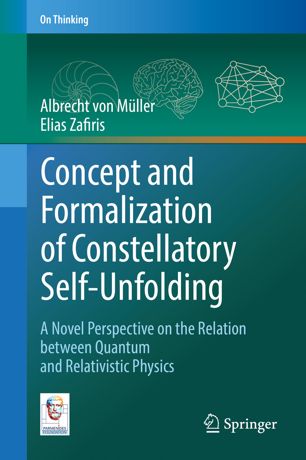

Most ebook files are in PDF format, so you can easily read them using various software such as Foxit Reader or directly on the Google Chrome browser.
Some ebook files are released by publishers in other formats such as .awz, .mobi, .epub, .fb2, etc. You may need to install specific software to read these formats on mobile/PC, such as Calibre.
Please read the tutorial at this link: https://ebookbell.com/faq
We offer FREE conversion to the popular formats you request; however, this may take some time. Therefore, right after payment, please email us, and we will try to provide the service as quickly as possible.
For some exceptional file formats or broken links (if any), please refrain from opening any disputes. Instead, email us first, and we will try to assist within a maximum of 6 hours.
EbookBell Team

4.8
24 reviewsThis volume offers a fundamentally different way of conceptualizing time and reality. Today, we see time predominantly as the linear-sequential order of events, and reality accordingly as consisting of facts that can be ordered along sequential time. But what if this conceptualization has us mistaking the “exhausts” for the “real thing”, i.e. if we miss the best, the actual taking place of reality as it occurs in a very differently structured, primordial form of time, the time-space of the present?
In this new conceptual framework, both the sequential aspect of time and the factual aspect of reality are emergent phenomena that come into being only after reality has actually taken place. In the new view, facts are just the “traces” that the actual taking place of reality leaves behind on the co-emergent “canvas’’ of local spacetime. Local spacetime itself emerges only as facts come into being – and only facts can be adequately localized in it.
But, how does reality then actually occur? It is conceived as a “constellatory self-unfolding”, characterized by strong self-referentiality, and taking place in the primordial form of time, the not yet sequentially structured “time-space of the present”. Time is seen here as an ontophainetic platform, i.e. as the stage on which reality can first occur. This view of time (and, thus, also space) seems to be very much in accordance with what we encounter in quantum physics before the so-called collapse of the wave function. In parallel, classical and relativistic physics largely operate within the factual portrait of reality, and the sequential aspect of time, respectively. Only singularities constitute an important exemption: here the canvas of local spacetime – that emerged together with factization – melts down again.
In the novel framework quantum reduction and singularities can be seen and addressed as inverse transitions: In quantum physical state reduction reality “gains” the chrono-ontological format of facticity, and the sequential aspect of time becomes applicable. In singularities, by contrast, the inverse happens: Reality loses its local spacetime formation and reverts back into its primordial, pre-local shape – making in this way the use of causality relations, Boolean logic and the dichotomization of subject and object obsolete.
For our understanding of the relation between quantum and relativistic physics this new view opens up fundamentally new perspectives: Both are legitimate views of time and reality, they just address very different chrono-ontological portraits, and thus should not lead us to erroneously subjugating one view under the other.
The task of the book is to provide a formal framework in which this radically different view of time and reality can be addressed properly. The mathematical approach is based on the logical and topological features of the Borromean Rings. It draws upon concepts and methods of algebraic and geometric topology – especially the theory of sheaves and links, group theory, logic and information theory, in relation to the standard constructions employed in quantum mechanics and general relativity, shedding new light on the pestilential problems of their compatibility. The intended audience includes physicists, mathematicians and philosophers with an interest in the conceptual and mathematical foundations of modern physics.